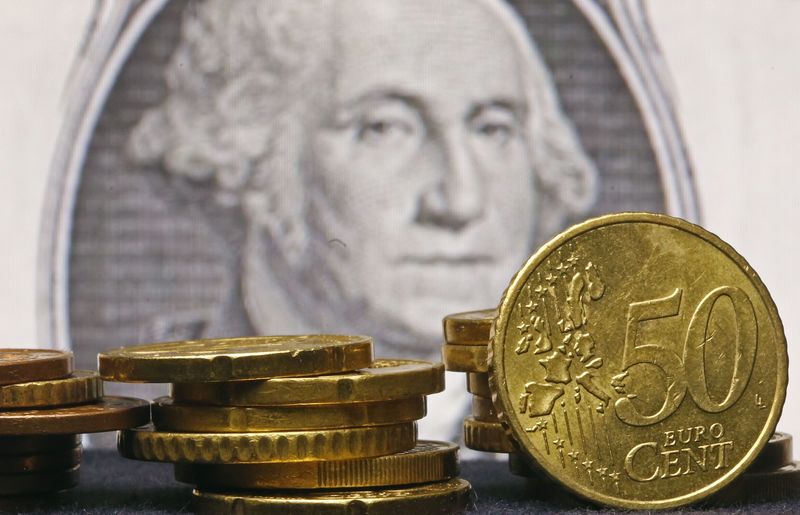Investing.com - The euro held steady near two-week lows against the U.S. dollar on Friday, as positive U.S. inflation data lent broad support to the greenback, while growing expectations for further easing by the European Central Bank dampened demand for the single currency.
EUR/USD hit 1.1067 during U.S. morning trade, the pair’s lowest since February 3; the pair subsequently consolidated at 1.1104.
The pair was likely to find support at 1.0987, the low of October 6 and resistance at 1.1153, Thursday’s high.
Data showed that the U.S. consumer price index was flat in January, compared to expectations for a 0.1% downtick and after a 0.1% fall the previous month. Year-on-year, consumer prices increased by 1.4% last month.
Core CPI, which excludes food and energy, rose 0.3% in January, more than the expected 0.2% gain and after an increase of 0.2% in December.
Meanwhile, sentiment on the single currency remained vulnerable after the minutes of the European Central Bank’s January meeting, released on Thursday, signaled that the bank is prepared to inject further monetary easing next month if necessary to bolster growth.
The euro was higher against the pound, with EUR/GBP gaining 0.49% to 0.7783.
The pound remained under pressure as discussions regarding Britain's European Union membership continued in Brussels for a second day on Friday.
U.K. Prime Minister David Cameron said Friday morning that there was ‘still no deal' on Britain's reforms package.
Earlier Friday, the U.K. Office for National Statistics said that retail sales rose 2.3% in January, beating expectations for a 0.8% gain. Year-on-year, retail sales climbed 5.2% last month.
Core retail sales, which exclude automobiles and fuel, increased by 2.3% in January, compared to expectations for an uptick of 0.7%.
A separate report showed that U.K. public sector net borrowing declined by £11.81 billion in January, confounding expectations for a drop of £13.95 billion.
